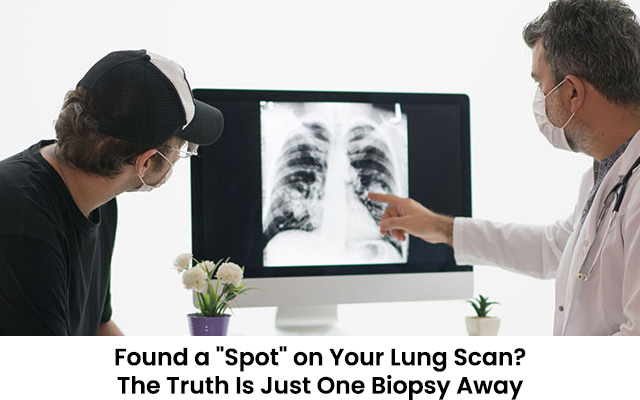If you’ve recently had a lung scan, you might be feeling a bit anxious after hearing that there’s a “spot” or “nodule” on your lungs. The good news? It’s not always as alarming as it sounds. In fact, many of these spots turn out to be harmless. But the key to understanding what’s going on is to take the next step – and that often means a biopsy.
Let’s break it down in simple terms, so you can feel more informed and less stressed.
What Is a Biopsy and Why Is It Important?
A biopsy is a simple procedure where a small sample of the nodule is taken for testing. This helps doctors determine whether the nodule is benign or malignant (cancerous). Think of it as the only way to get to the bottom of things.
If the biopsy shows that the spot is benign, you can breathe a sigh of relief and move on. If it turns out to be cancerous, the biopsy results will help your doctor figure out the best course of treatment.
Don’t worry – a biopsy is generally a quick and safe procedure.
Depending on where the nodule is located, doctors might perform the biopsy with a needle, using imaging guidance to ensure accuracy.
In some cases, a more detailed procedure might be necessary, but your doctor will guide you through the process step-by-step. And if you’re in need of expert support, a reliable diagnostic centre in Naktala will be able to perform this process with the utmost care and precision.
What Exactly Is a “Spot” on Your Lung Scan?
A “spot” on your lung scan is typically what doctors refer to as a lung nodule. These are small growths that appear in your lungs, and they show up on imaging tests like X-rays or CT scans.
The vast majority of lung nodules are benign, which means they are non-cancerous. However, the tricky part is that some nodules might indicate early-stage lung cancer. So, doctors have to take a closer look to rule out the worst-case scenario.
Should You Panic? Not Really.
Seeing a “spot” on your lung scan can definitely be unnerving, but it’s important not to jump to conclusions.
The vast majority of lung nodules are benign. In fact, research shows that over 95% of lung nodules are harmless. They can be caused by a variety of things, such as:
- Infections (like a healed lung infection)
- Inflammatory conditions
- Benign tumors (non-cancerous growths)
However, some nodules may be cancerous, so your doctor will likely recommend further tests to understand what’s going on. This is where the biopsy comes into play.
With the right guidance and tests, your trusted diagnostic centre in Naktala can help clear up any confusion and provide accurate results.
What Happens After the Biopsy?
Once your biopsy results come back, your doctor will explain what they mean. If the nodule is benign, they may simply keep an eye on it with regular follow-up scans. If it’s malignant, your doctor will discuss treatment options, which could range from surgery to chemotherapy or radiation therapy, depending on the type and stage of cancer.
Conclusion
In short, finding a “spot” on your lung scan doesn’t necessarily mean you have cancer. While it’s important to follow up with a biopsy to be sure, most lung nodules are benign. If you’re feeling anxious, remember that you’re not alone, and there’s always support available to guide you through the process. Take the next step confidently, and rest assured that you’re taking the right approach to your health.
Schedule a biopsy, stay informed, and trust that you’re taking the right steps to protect your health, with the help of a reliable diagnostic centre in Naktala.

